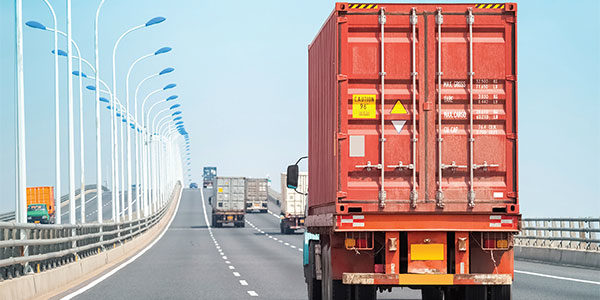Watching over intermodal's interests: interview with Joni Casey

Joni Casey has had a close-up view of how the sausage is made. She has spent more than 30 years in the transportation industry, most of that time working for trade associations representing the trucking industry, third-party logistics service providers, and, since 1997, intermodal service providers.
She began her career as an economist for the American Trucking Associations (ATA) and was the first executive director of that group's Intermodal Conference. She left that position to become CEO of the Transportation Intermediaries Association, where she served until becoming president and CEO of the Intermodal Association of North America (IANA). She has spent the last 18 years at the helm of that organization, whose stated mission is to promote the growth of intermodal freight transportation through innovation, education, and dialogue. The trade group boasts more than 1,000 members, including railroads, ocean carriers, port authorities, intermodal and over-the-road motor carriers, and intermodal marketing companies.
Casey has served on various industry committees and boards, including the executive committee of the Transportation Research Board; the University of Denver's Intermodal Transportation Institute; the Global Maritime and Transportation School of the U.S. Merchant Marine Academy; the board of advisers of her alma mater, the Smith School of Business at the University of Maryland; and the business advisory committee of Northwestern University.
Late last year, the Containerization & Intermodal Institute awarded Casey its Lifetime Achievement Award.
She replied by e-mail to questions posed to her by DC Velocity.

Q: Recent surveys of shippers indicate that intermodal service providers will continue to gain market share from over-the-road carriers. How has the industry achieved that continuing success?
A: The reasons for highway diversions are multiple—in previous years, the higher cost of fuel was one factor (although not for the last 18-plus months). More recently, market share gains have been the result of continued and increased investment in intermodal facilities and infrastructure, a tightening in over-the-road capacity, and the impact of government regulations on driver productivity.
Q: How will the industry sustain that growth?
A: Driver productivity isn't expected to improve in the near term, so this, as well as expected tightening in over-the-road capacity, will continue to assist in highway conversions. And the railroads plan to make continued investments in their intermodal networks. Another key component to sustained growth is delivering consistent service to intermodal customers.
Q: What sorts of initiatives are IANA members undertaking to provide the service consistency that shippers require?
A: Again, I would say investment in the network, from a national/macro perspective, and more and better contingency planning for the types of issues, such as severe weather, that caused service disruptions in the past. I can't speak to specific company strategies, as these are typically commercial issues.
Q: What do you see as the biggest challenges for the intermodal segment and how will the industry address them?
A: The industry's biggest challenges include the following:
1. Driver recruitment and retention. The entire freight industry is dealing with this issue. In terms of intermodal, improving a driver's treatment at (shippers' and receivers') facilities and reducing the amount of time spent in a queue and at a facility will go a long way toward improving the productivity and earnings capability of intermodal drivers.
2. Terminal congestion. The (use) of more technology and the continued formation of chassis pools as well as increased investment in terminal infrastructure should improve facility throughput and equipment utilization.
3. Economic uncertainty. The economic recovery has seen multiple fits and starts. Freight transportation growth is reliant on a strong economic base, and we just aren't seeing consistent consumer spending that contributes to sustained economic growth. Lower gas prices haven't really translated to increased purchasing, and the stronger dollar abroad is adversely impacting U.S. exports. However, up until recent months, international shipment volumes had sustained intermodal growth for 2015.
4. Government regulations. Rail reregulation seems to be an ever-present threat and while the new surface transportation reauthorization legislation did not include an increase to truck size and weight limits, this also remains a possibility, so the intermodal industry must remain vigilant in these areas. It's difficult to know the long-term impact of new electronic logging device regulations on intermodal motor carriers, but there is speculation of additional reductions in driver productivity for the over-the-road market—which makes this issue a potential "good news/bad news" item for intermodal.
Q: What are your highest priorities on the regulatory front?
A: In addition to those cited above, IANA is committed to making sure that the funding provisions set forth in the FAST [Fixing America's Surface Transportation] Act will be used for the benefit of intermodal connectors and investment in intermodal facilities and infrastructure.
Q: What issues are at the top of your agenda for 2016?
A: Basically, tackling the challenges listed above as well as implementation of the freight provisions of the FAST Act.
Related Articles

Copyright ©2024. All Rights ReservedDesign, CMS, Hosting & Web Development :: ePublishing